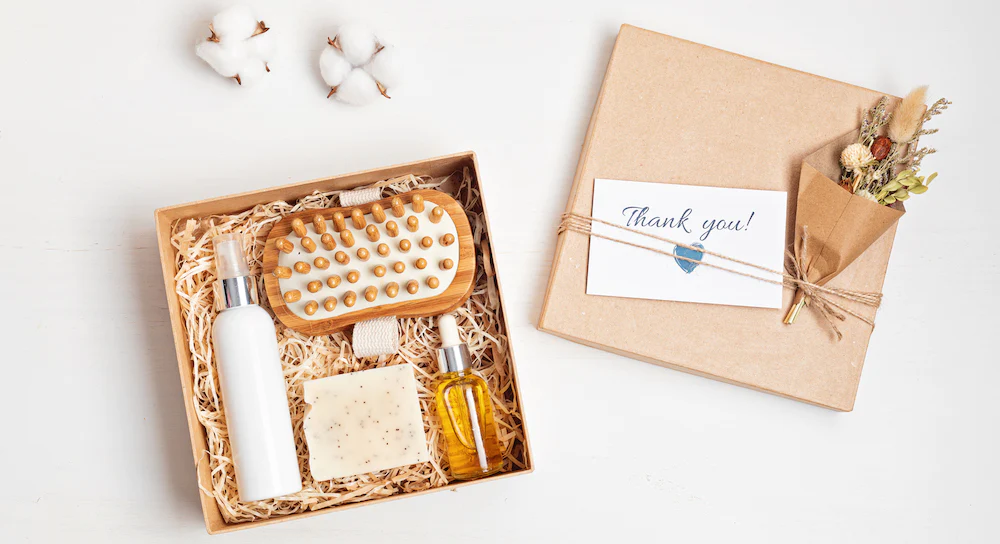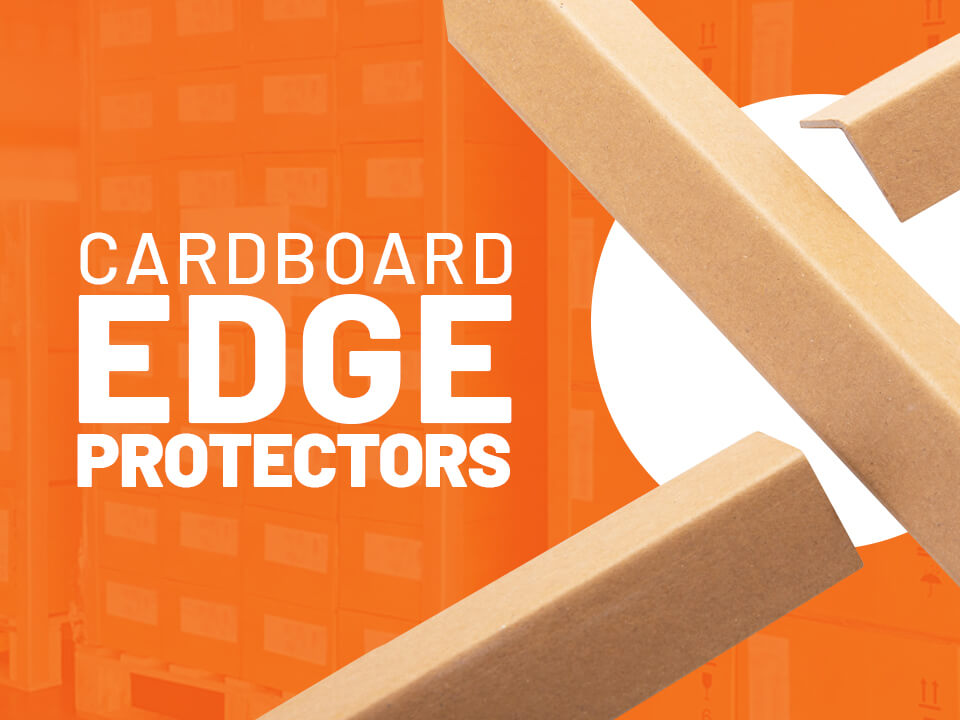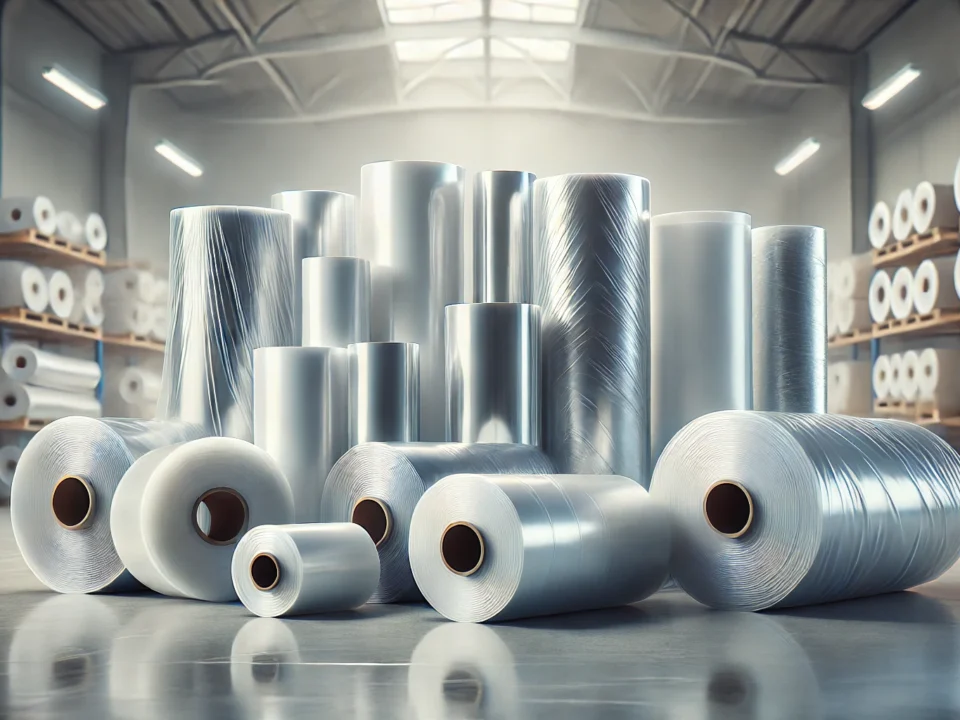
How Sustainable Packaging Increases Profits for Companies
January 11, 2024Custom product packaging plays a crucial role in presenting your products to the market. Unlike mass-manufactured packaging, custom packaging is specifically designed to meet the unique requirements of your product. It allows you to tailor the materials, text, artwork, and colours to align with your brand and target audience.
So, let’s explore the importance of product packaging, key considerations for selecting the best packaging, various types of product packaging, and the benefits of using Orange Packaging UK's high-quality solutions.
What is Custom Product Packaging?
Custom product packaging refers to packaging that is uniquely created for your product, deviating from standard off-the-shelf options. It allows you to personalize the packaging design based on factors such as the intended audience, product usage, transportation needs, and display requirements. By customizing your packaging, you can create a distinct identity for your product and enhance its appeal to customers.
- Make a Lasting Impression: Custom packaging creates a visually stunning and cohesive design that aligns with your brand's identity, leaving a memorable first impression.
- Fuel Your Brand's Marketing Success: Custom packaging serves as a powerful marketing tool, communicating your brand's values, story, and unique selling propositions to resonate with your target audience.
- Stand Out from the Crowd: Custom packaging breaks free from generic alternatives, allowing your products to command attention, captivate consumers, and establish a strong visual presence.
- Memorable Branding: Custom packaging prominently features your logo, reinforcing your brand identity, fostering brand loyalty, and boosting brand recall.
- Value for Small Businesses: Custom packaging is a worthwhile investment for small businesses, adding professionalism, perceived value, and differentiation from competitors, contributing to business growth and success.
The Importance of Product Packaging
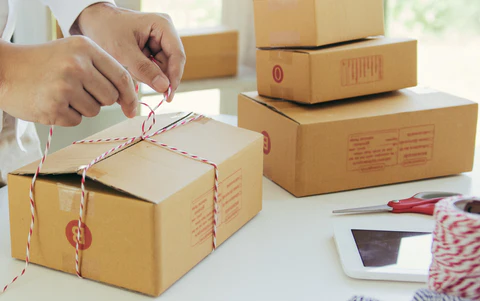
Custom product packaging serves multiple essential functions. Firstly, it provides protection to ensure the safe delivery of your products during shipping and transport. It acts as a shield against potential damage, ensuring that your products reach customers in optimal condition.
Secondly, packaging serves as a communication tool, conveying crucial product information such as regulatory data and usage instructions. Lastly, well-designed product packaging acts as a powerful marketing tool, capturing the attention of potential buyers as they browse through both physical and digital shelves.
Considerations for Choosing the Best Packaging:
When deciding on the packaging for your products, several vital factors should be taken into account. The following considerations are key to selecting the most suitable packaging:
- Durability: Your packaging should withstand the rigours of transportation and handling to protect your products effectively.
- Ease of Opening: Packaging should be user-friendly and easy to open, ensuring a positive customer experience.
- Marketing Message: The design and branding elements on your packaging should align with your overall marketing strategy, conveying the essence of your brand and attracting the attention of your target audience.
- Packaging Design and Branding: Aligning packaging design with your branding strategy ensures that every aspect reflects your brand's values and resonates with your target audience.
- Packaging Size: Consider product dimensions, fragility, storage needs, and shipping costs when choosing packaging size. Optimal size balances protection and material usage.
- Environment-Friendly: Choose eco-friendly packaging to meet consumer expectations and demonstrate a commitment to sustainability. Use recyclable, biodegradable, or renewable materials. Ensure compliance with local regulations and certifications.
Types of Product Packaging
Product packaging can be created using a wide range of materials, each catering to different product types and marketing objectives. Here are some popular types of packaging and their common applications:
Cardboard Protection:
- Edge protectors are versatile and widely used for packaging products.
- Offers strength, affordability, and customization options.
- Provides excellent protection during transportation and storage.
- Ideal for various products, including electronics, clothing, cosmetics, etc.
Parcel Boxes:
- Sturdy cardboard boxes for durability and protection.
- Available in various sizes to accommodate different products.
- Easy to stack, efficient for storage and transportation.
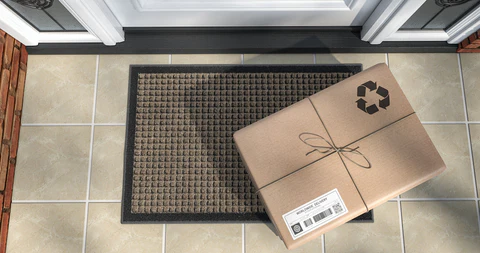
Air-Filled Protection:
- Utilizes air pillows, bubble wrap, or similar materials.
- Adds an extra layer of cushioning for delicate or fragile products.
- Acts as a shock absorber, minimizing impact during shipping.
- Ideal for protecting glassware, electronics, ceramics, etc.
Thermal Protection:
- Maintains desired temperature range during transportation.
- Includes insulating materials, foam, or insulated liners.
- Utilizes cooling packs or heating elements for temperature control.
- Crucial for e-commerce businesses shipping perishable or sensitive goods.
Tapes:
- Tapes are essential for secure sealing and package integrity.
- Different materials with varying strength and adhesion.
- Reliable seal against tampering, moisture, and dust.
- Printed branding enhances the professional appearance.
Bubble Envelopes:
- Ideal for smaller, lightweight items.
- Padded interior with bubble wrap for cushioning and protection.
- Lightweight, cost-effective, and suitable for jewellery, accessories, documents, etc.
- Convenient peel-and-seal closures.
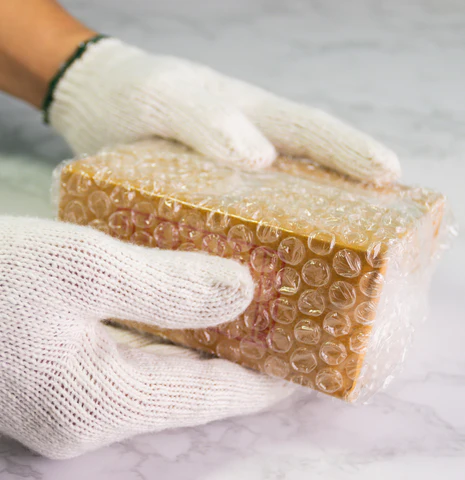
Bubble Wrap:
- Versatile packaging material for fragile items.
- Air-filled bubbles act as shock absorbers.
- Bubble wrap provides cushioning and minimises breakage risk.
- Lightweight to reduce shipping costs.
Kraft Bags:
- Eco-friendly option for e-commerce packaging.
- Kraft bags are made from tear-resistant and recyclable Kraft paper.
- Natural and rustic appearance.
- Reinforced handles for convenient carrying.
Kraft Packaging Paper:
- Versatile protective layer for larger boxes or parcels.
- Prevents shifting and scratching during transit.
- Biodegradable and recyclable.
- An environmentally friendly alternative to plastic or foam-based materials.
Final Thoughts

Choosing the right packaging for your products is a critical decision that influences both the practicality and marketing impact of your offerings. By carefully considering packaging design, size, material, and packaging budget, you can create packaging that not only protects your products but also enhances your brand image and engages customers effectively.
Whether you opt for traditional packaging materials or explore innovative solutions like Orange Packaging UK, prioritizing the right packaging strategy will help you differentiate your products in a competitive market. Remember, the packaging of your product is the first impression your customers have of your brand, so make it count.
By understanding the importance of packaging, selecting the right type of packaging, and utilizing the expertise of reputable packaging providers, you can set your products up for success and ensure customer satisfaction.
Top 15 Questions About Product Packaging
How do I choose the best product packaging?
When selecting consumer product packaging, prioritize options that guarantee the safe arrival of your product into the hands of your customers, undamaged.
What are the criteria for choosing the right packaging?
When choosing the right packaging, consider criteria such as security and durability, affordability and ease of use, as well as availability and eco-friendliness.
What are the 5 important things to consider with a product's packaging?
When considering a product's packaging, important factors to evaluate are size, safety, durability, shelf space, and storage space.
What are the 3 different factors points to consider in packaging?
When it comes to packaging, consider three essential factors: eye-catching design, connecting your brand message with consumers, and ensuring clarity and conciseness.
What are the 5 characteristics of good packaging?
Good packaging exhibits five key characteristics: it is attractive, informative, convenient, protective, cost-effective, and environmentally friendly.
What are the 6 requirements of packaging?
Packaging must fulfill six key requirements: product protection, information provision, multi-item containment, product promotion, storage optimization, and environmental consideration.
What are the four 4 factors to consider in packaging?
When packaging products, key considerations include safety, sustainability, design elements, and size.
What are the 7 Rs of sustainable packaging?
The 7 Rs of sustainable packaging include reduce, rethink, refuse, repair, reuse, regift, and recycle.
What are the 7 basic steps to packaging design?
In packaging design, the 7 key steps include project briefing, product understanding, target audience research, sales channel selection, competitor analysis, design hierarchy establishment, and seeking inspiration beyond the category.
What are the four R's of packaging?
The four R's of packaging are: remove, reduce, reuse, and recycle.
What are the 4 methods of packaging?
The four packaging methods are anti-corrosive, pharmaceutical, plastics, and flexible packaging.
What are the 10 different types of packaging?
Various packaging options include paperboard boxes, aluminium foil, foam, kraft paper, corrugated fiberboard, polythene, rigid boxes, stretch film, plastic bags, and shrink film.
What are 5 packaging types?
Plastic boxes, rigid boxes, chipboard packaging, poly bags, and foil-sealed bags are five packaging types available.
What are the 4 essentials of packaging design?
The four essentials of packaging design include colours, visuals, typography, and format.
What is effective packaging?
Effective packaging refers to packaging that successfully fulfils its intended purpose and achieves its desired outcomes.







